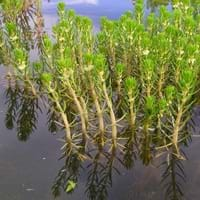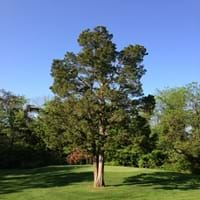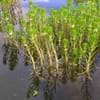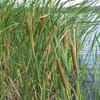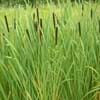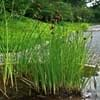Life Span
Perennial
Perennial
Type
Aquatics
Needled or Scaled Evergreen
Origin
Australia, New Zealand
Northeastern United States, Mid-Atlantic United States, Southeastern United States, North-Central United States, Central United States, South-Central United States, Canada
Types
Not available
Eastern juniper, Souther juniper
Number of Varieties
Not Available
Habitat
Lakes, Ponds, stream banks
Lower slopes, Open Plains, Prairies, Woodlands, Woods
USDA Hardiness Zone
8-12
3-7
Sunset Zone
21,22
A3, 1a, 1b, 2a, 2b, 3a, 3b, 4, 5, 6, 7, 8, 9, 10, 11, 12, 13, 14, 15, 16, 17, 18, 19, 20, 21, 22, 24
Habit
Upright/Erect
Pyramidal
Minimum Width
Not Available
Flower Color
Dark Red, Ivory
Light Red, Sky Blue, Yellow Brown
Flower Color Modifier
Bicolor
Bicolor
Fruit Color
Yellow Brown
Light Blue
Leaf Color in Spring
Green, Light Green
Dark Green
Leaf Color in Summer
Green
Dark Green
Leaf Color in Fall
Green
Dark Green
Leaf Color in Winter
Green
Dark Green, Bronze
Leaf Shape
Pinnate
Irregular
Plant Season
Spring, Summer, Fall
Spring, Summer, Fall, Winter
Sunlight
Full Sun, Partial Sun
Full Sun, Partial Sun
Type of Soil
Clay, Loam, Sand
Clay, Loam, Sand
The pH of Soil
Acidic, Neutral
Acidic, Neutral, Alkaline
Soil Drainage
Poorly Drained
Well drained
Bloom Time
Late Spring, Early Summer, Summer
Late Spring
Tolerances
waterlogging
Drought, Dry soil, Heat Tolerance
Where to Plant?
In Water
Ground
How to Plant?
Cuttings, Divison, Seedlings
Seedlings, Stem Planting
Plant Maintenance
Medium
Low
Watering Requirements
Plant grows in water
Average Water Needs, Do Not over Water, Never Over-water, Requires regular watering, Requires watering in the growing season, Water daily during growing season
In Summer
Lots of watering
Lots of watering
In Spring
Moderate
Average Water
In Winter
Average Water
Average Water
Soil pH
Acidic, Neutral
Acidic, Neutral, Alkaline
Soil Type
Clay, Loam, Sand
Clay, Loam, Sand
Soil Drainage Capacity
Poorly Drained
Well drained
Sun Exposure
Full Sun, Partial Sun
Full Sun, Partial Sun
Pruning
Prune regularly, Remove damaged leaves, Remove dead branches, Remove dead leaves
Remove damaged leaves, Remove dead branches, Remove dead leaves
Fertilizers
iron-rich fertilizer
Compost
Pests and Diseases
Sap-Sucking Insects, Stem rot
Gall Insects, Red blotch, Rust, Sooty Mold
Plant Tolerance
waterlogging
Drought, Dry soil, Heat Tolerance
Flowers
Insignificant
None
Flower Petal Number
Not Available
Single
Fragrant Bark/Stem
No
Yes
Foliage Texture
Fine
Medium
Foliage Sheen
Matte
Glossy
Invasive
Sometimes
Sometimes
Attracts
Not Available
Insects
Allergy
Not Available
Asthma, breathing problems
Aesthetic Uses
Water gardening
Beautification, Bonsai, Landscape Designing, Showy Purposes
Beauty Benefits
Not Available
Good for skin and hair
Environmental Uses
Air purification
Air purification, Food for insects, Indoor Air Purification, Prevent Soil Erosion, Shadow Tree, Shelter for wildlife, Versatility, Very little waste, Wildlife
Medicinal Uses
Not Available
Cold, Cough
Part of Plant Used
Not Available
Leaves
Other Uses
Not Available
Decoration Purposes, Showy Purposes, Used as Ornamental plant, Used for its medicinal properties
Used As Indoor Plant
No
Yes
Used As Outdoor Plant
Yes
Yes
Garden Design
Bog Garden, Container, Groundcover, Tropical, Water Gardens
Feature Plant, Foundation, Mixed Border, Screening, Wind Break, Shade Trees, Street Trees
Botanical Name
MYRIOPHYLLUM propinquum
JUNIPERUS virginiana
Common Name
Parrot's Feather, Watermilfoil
Pencil cedar, Red Juniper
In Hindi
watermilfoil
पूर्वी लाल देवदार
In German
watermilfoil
Eastern Red Cedar
In French
myriophylle
Red Cedar Orient
In Spanish
watermilfoil
Cedro Rojo del Este
In Greek
watermilfoil
Ανατολική Red Cedar
In Portuguese
watermilfoil
Eastern Red Cedar
In Polish
watermilfoil
Eastern Red Cedar
In Latin
watermilfoil
Eastern Red Cedar
Phylum
Magnoliophyta
Tracheophyta
Class
Magnoliopsida
Pinopsida
Order
Saxifragales
Pinales
Family
Haloragaceae
Cupressaceae
Genus
Myriophyllum
Juniperus
Clade
Angiosperms, Core eudicots, Eudicots
Not Available
Tribe
Not Available
Mirini
Subfamily
Not Available
Cupressoideae
Number of Species
Not Available
Importance of Watermilfoil and Eastern Red Cedar
Want to have the most appropriate plant for your garden? You might want to know the importance of Watermilfoil and Eastern Red Cedar. Basically, these two plants vary in many aspects. Compare Watermilfoil and Eastern Red Cedar as they differ in many characteristics such as their life, care, benefits, facts, etc. Every gardener must at least have the slightest clue about the plants he wants to plant in his garden. Compare their benefits, which differ in many ways like facts and uses. The medicinal use of Watermilfoil is Not Available whereas of Eastern Red Cedar is Cold and Cough. Watermilfoil has beauty benefits as follows: Not Available while Eastern Red Cedar has beauty benefits as follows: Not Available.
Compare Facts of Watermilfoil vs Eastern Red Cedar
How to choose the best garden plant for your garden depending upon its facts? Here garden plant comparison will help you to solve this query. Compare the facts of Watermilfoil vs Eastern Red Cedar and know which one to choose. As garden plants have benefits and other uses, allergy is also a major drawback of plants for some people. Allergic reactions of Watermilfoil are Not Available whereas of Eastern Red Cedar have Asthma and breathing problems respectively. Having a fruit bearing plant in your garden can be a plus point of your garden. Watermilfoil has no showy fruits and Eastern Red Cedar has showy fruits. Also Watermilfoil is not flowering and Eastern Red Cedar is not flowering . You can compare Watermilfoil and Eastern Red Cedar facts and facts of other plants too.
